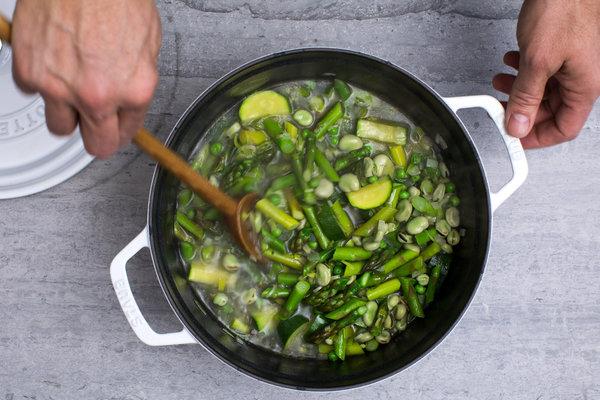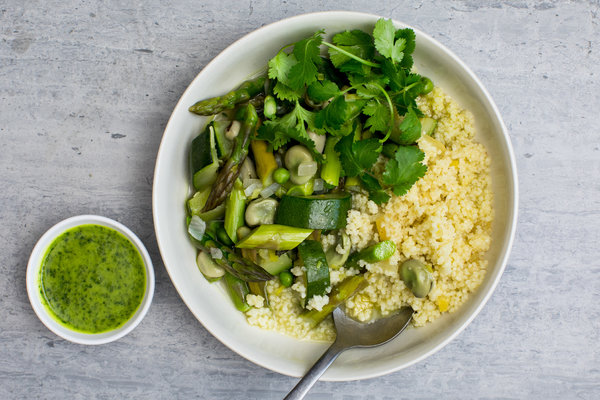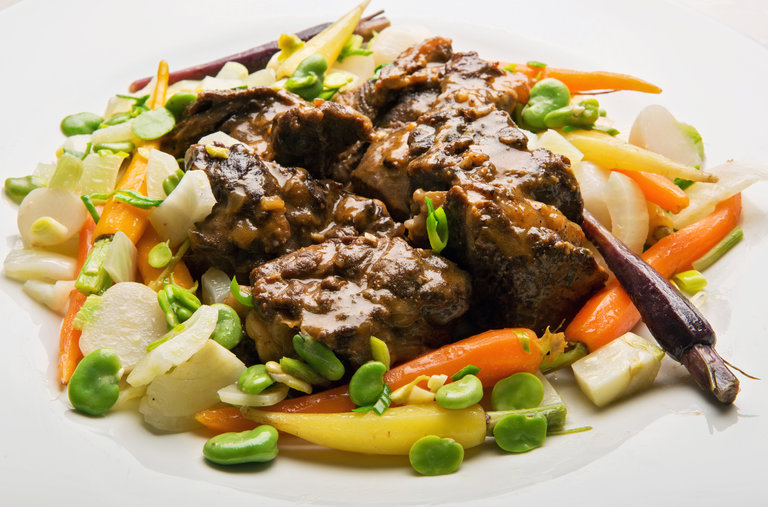Is “ragoût” just a five-dollar word for stew, or is there a difference? To me, the French word sounds more elegant and painstaking. (To be clear, we’re not talking about ragù, an Italian pasta sauce.) And though a ragoût can take many forms, one made entirely of vegetables is something quite special.
A good vegetable ragoût takes a bit of nursing. A Dutch oven makes a good cooking vessel, or a wide, heavy-bottomed pot. Each component is added sequentially, depending on its cooking time.
It’s usual to start with an onion, which needs slow cooking to soften. Each successive ingredient adds a layer of flavor; by the end, all the elements have influenced one another, creating a harmonious, integrated whole.

A medley of spring vegetables come together in a Dutch oven, or wide, heavy-bottomed pot.CreditAndrew Scrivani for The New York Times
Since I wanted a green spring-vegetable ragoût, I chose onions, leeks, zucchini, asparagus, fava beans and peas, along with tender spinach. All of these are becoming available in warmer climates, though, on the East Coast and in northern regions, they may still be a few weeks away. (I’ll confess, I used vegetables from California, because they provided an illusion of the spring weather that has not yet arrived in New York.) But you can make a vegetable ragoût in any season, with whatever vegetables are available.
I wanted my ragoût, though delicate, to have a Moroccan feel, so I included cumin, coriander, cilantro and a touch of green chile, and planned to serve it with a special kind of buttered couscous.
Recently, I had the chance to work with the San Francisco chef Mourad Lahlou, who takes a modernist approach to Moroccan cuisine at his restaurant Mourad. He showed me a method for amazingly flavorful couscous. He tosses freshly steamed, saffron-tinted couscous with nutty sizzling brown butter and lots of chopped preserved lemon. This is not at all traditionally Moroccan, but it is fantastic.
I used the instant couscous available in many supermarkets — Mr. Lahlou would not approve — but after the initial quick cooking, I steamed it over boiling water for another 30 minutes to make it lighter and fluffier, a compromise that makes a huge difference.
Whether called a ragoût or a stew, this was the most satisfying vegetarian supper; a mingling of sweet spring vegetables, paired with the most brilliant golden couscous imaginable.
Recipe: Spring Vegetable Ragoût







